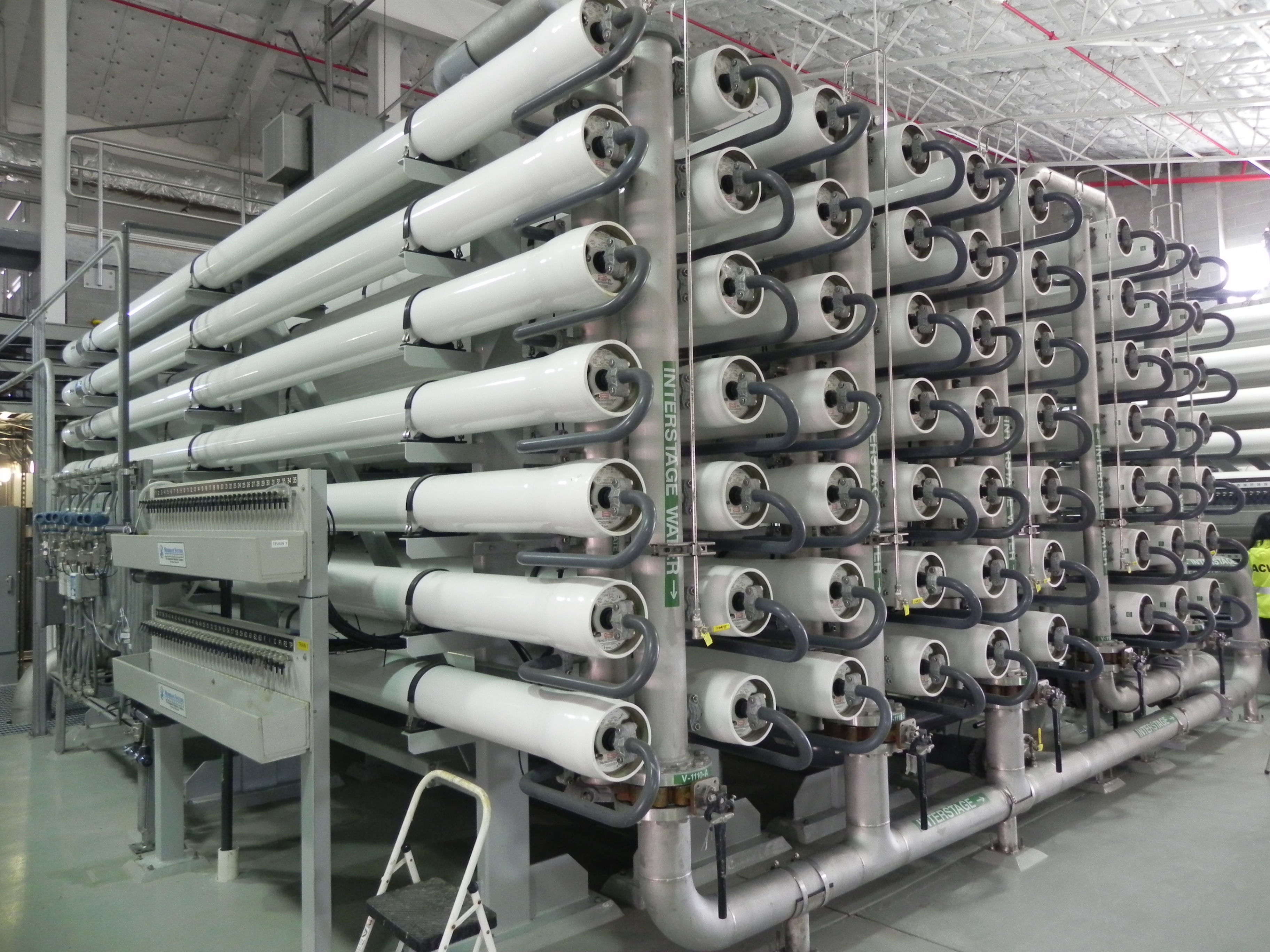Photograph of a skid of reverse osmosis membranes installed at the Alameda County Water District Newark Desalination Facility. These membranes, installed in 2010, remove salts from brackish groundwater to provide high quality water to local customers.
As California continues to adapt to the impacts of a changing climate, the State must work to identify future sources of safe, reliable water for all. This week, the Department of Water Resources (DWR) released a report identifying future planned desalination projects to help meet the brackish water supply goals identified in California’s Water Supply Strategy: Adapting to a Hotter, Drier Future.
As a key strategy in the Water Supply Strategy, desalination is the process of removing salts and minerals from brackish water and seawater to produce water suitable for drinking water, irrigation and other supply needs. Brackish water is a mix of freshwater and saltwater and occurs in a natural environment that has more salinity than freshwater, but not as much as seawater. In 2020, over 100,000 acre-feet of brackish water was desalinated for drinking water, which was two-thirds of the desalinated water produced and used in California.
One of the State’s goals in the Water Supply Strategy is to increase its water supply by implementing new brackish desalination projects that would provide 28,000 acre-feet of water per year by 2030 and 84,000 acre-feet per year no later than 2040.
The Projected Brackish Water Desalination Projects in California report helps State water managers by identifying existing and projected brackish desalination projects to evaluate if the state can achieve the strategy’s desalination goals by 2030 and 2040. The report only identifies desalination projects sourcing brackish groundwater and brackish surface water, not sea water. The report projects that the State will achieve the 2030 goal.
“From coastal cities to inland farms, desalination brings water security within reach for communities where traditional water supplies are limited,” said DWR Director Karla Nemeth. “This is just one piece of the puzzle as we work to invest in strategies that help replenish and secure our state’s water supply for future generations.”
To support cost-effective projects in appropriate locations and to help address local and regional water supply challenges, DWR’s Water Desalination Grant Program has awarded over $82 million in Proposition 1 desalination grants (ranging from over $100,000 to $10 million) to 20 projects statewide. Of the $82 million, $33 million was awarded to projects addressing brackish groundwater.
DWR has also partnered with the U.S. Department of Energy’s National Alliance for Water Innovation (NAWI) to fund research and pilot projects that reduce energy demand and costs for desalination projects. Led by the Lawrence Berkeley National Laboratory, the NAWI Alliance is converting unconventional water sources into secure, desalinated water supplies at a cost equivalent to other available water sources.
A full list of desalination projects funded by DWR and more information on the Water Desalination Grant program are available on DWR’s Water Desalination Grant webpage.
